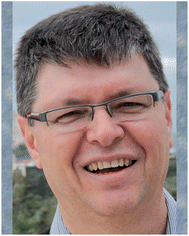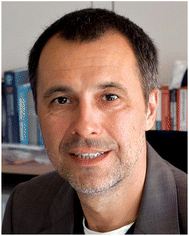Editorial – Analytical Sciences in Brazil
It is an honour to introduce this web-themed issue of Analyst and Analytical Methods that is dedicated to Analytical Sciences in Brazil. This timely initiative of the Royal Society of Chemistry occurs during a particularly special and important period for Brazilian researchers, as state and national funding agencies have recently made exceptional efforts towards a consistent enhancement of quality in the research, development and innovation performed in Brazil, which is prominently expressed within programs known as ‘National Institutes of Science and Technology’ and ‘Science without Borders’. The National Institutes of Science and Technology program aims at aggregating research groups all across Brazil within Virtual Centres to perform collaborative, cutting-edge science in national strategic areas for supporting the sustainable development of the country, and for stimulating innovation in the sciences. Science without Borders is an international mobility and exchange program with the objective of further expanding and consolidating science, technology and innovation, and for encouraging and supporting the internationalisation process at universities and research centres. Furthermore, opportunities are being created for the implementation of long-term collaboration projects between Brazilian and highly experienced international researchers, besides promoting the exchange of students at the undergraduate, graduate, and postgraduate level with international institutions of high standard. While these programs will certainly improve the international competitiveness of Brazilian research, it is the actual science that is performed by the involved researchers that will fill these programs with life.The topic of the present themed issue is particularly significant, as it emphasises the importance of analytical chemistry within the global scientific landscape. For quite a period, analytical chemistry was considered a peripheral area of chemistry, and analytical chemists were reduced to providing devices and methods applied for qualitative and quantitative analyses driven by the need, for example, of industries (process and quality control), clinical laboratories, and environmental monitoring. However, over the past decades ‘conventional analytical chemistry’ has undergone a remarkable transformation into ‘modern analytical sciences’, not entirely but certainly in part attributed to the advancements seen in microelectronics, microfabrication, nanomaterials/nanotechnology, and chemometrics. Nowadays, modern analytical sciences have matured into a highly interdisciplinary, agile, and transformative research discipline ranging, for example, from process analytical technology to single-cell analysis, from environmental monitoring to green chemistry, from clinical/medical diagnostics to chemo/bio-sensing, and from analysing material compositions to quantifying food contaminants. In addition to determining ‘what’ and ‘how much’ of a target constituent is occurring, contemporary analytical chemistry has added the spatial, temporal and speciation domains to these parameters, i.e., ‘when’, ‘where’, and ‘how’ an analyte is present within a given matrix. In other words, analytical chemistry has evolved into a key discipline of modern chemistry moving from its periphery to its very centre.
How about the situation of analytical sciences in Brazil? This was the question we asked ourselves when the idea of a themed issue on this subject was launched. Is Brazil still focusing on ‘analytical chemistry’ or contributing to actively driving innovative developments in the ‘analytical sciences’? While this question may certainly be answered in view of many different aspects and considerations, the answer of the Brazilian analytical chemistry community clearly speaks for itself: within two months after the deadline for paper submissions to this themed issue, 38 manuscripts had been accepted, which impressively documents the relevance, vitality and innovativeness of analytical sciences in Brazil. Most importantly, and to the particular pleasure of the Editors, rather than from selected – and probably financially favoured – regions within Brazil, contributions have been submitted from the south to the north, and from the east to the west of the country. For example, while the northern and western regions within Brazil were certainly once considered ‘far away’ from the epicentres of science, this has dramatically changed during the past 30 years, such as analytical chemistry has. From there being initially only a few graduate programs at universities in the south and south-east of Brazil, the scientific landscape has expanded to give a wide variety scattered all across the country. This huge endeavour of graduate researchers from different states, who were the seeds of these new programs, is nowadays reflected in the diversity and strength of chemical education across the whole of Brazil. Hence, the answer is clearly ‘yes’, Brazil is dedicated to and contributes to modern analytical sciences above and beyond the contributions published in this themed issue!
Finally, the Editors of this themed issue – Professor Ivo M. Raimundo Jr (University of Campinas, Brazil) and Professor Boris Mizaikoff (University of Ulm, Germany) – would like to deeply thank May Copsey (Editor) and Rebecca Brodie (Deputy Editor) for managing all the matters regarding this issue, which would not have been possible without their generous assistance. Furthermore, they would like to thank the National Institute of Advanced Analytical Science and Technology (INCTAA) for providing the roots for the present enterprise. At last, but not the least, they would like to acknowledge all Brazilian researchers who have contributed to this issue, enabling Analyst and Analytical Methods to provide their readers with the special flavour of analytical sciences currently performed in Brazil!
For a Portuguese version of this Editorial, please see rsc.li/1tSW3Lj.
| This journal is © The Royal Society of Chemistry 2014 |


